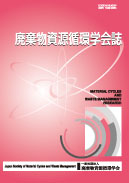Volume 27, Issue 2
Displaying 1-11 of 11 articles from this issue
- |<
- <
- 1
- >
- >|
Preface
-
2016Volume 27Issue 2 Pages 101-102
Published: March 31, 2016
Released on J-STAGE: October 01, 2020
Download PDF (170K)
Special Issues : Emerging Stream in “Co-benefit Approach Menu” in Framwork Convention on Climate Change
-
2016Volume 27Issue 2 Pages 103-108
Published: March 31, 2016
Released on J-STAGE: October 01, 2020
Download PDF (460K) -
2016Volume 27Issue 2 Pages 109-116
Published: March 31, 2016
Released on J-STAGE: October 01, 2020
Download PDF (347K) -
2016Volume 27Issue 2 Pages 117-122
Published: March 31, 2016
Released on J-STAGE: October 01, 2020
Download PDF (672K) -
2016Volume 27Issue 2 Pages 123-132
Published: March 31, 2016
Released on J-STAGE: October 01, 2020
Download PDF (494K) -
2016Volume 27Issue 2 Pages 133-138
Published: March 31, 2016
Released on J-STAGE: October 01, 2020
Download PDF (469K) -
2016Volume 27Issue 2 Pages 139-146
Published: March 31, 2016
Released on J-STAGE: October 01, 2020
Download PDF (968K)
Solid Waste Archives Series/Records of “Garbage War”
-
2016Volume 27Issue 2 Pages 147-152
Published: March 31, 2016
Released on J-STAGE: October 01, 2020
Download PDF (563K)
Activity Reports from the Regional Chapters
-
2016Volume 27Issue 2 Pages 153-154
Published: March 31, 2016
Released on J-STAGE: October 01, 2020
Download PDF (434K) -
2016Volume 27Issue 2 Pages 155-158
Published: March 31, 2016
Released on J-STAGE: October 01, 2020
Download PDF (488K)
Book Review
-
2016Volume 27Issue 2 Pages 159-160
Published: March 31, 2016
Released on J-STAGE: October 01, 2020
Download PDF (203K)
- |<
- <
- 1
- >
- >|
